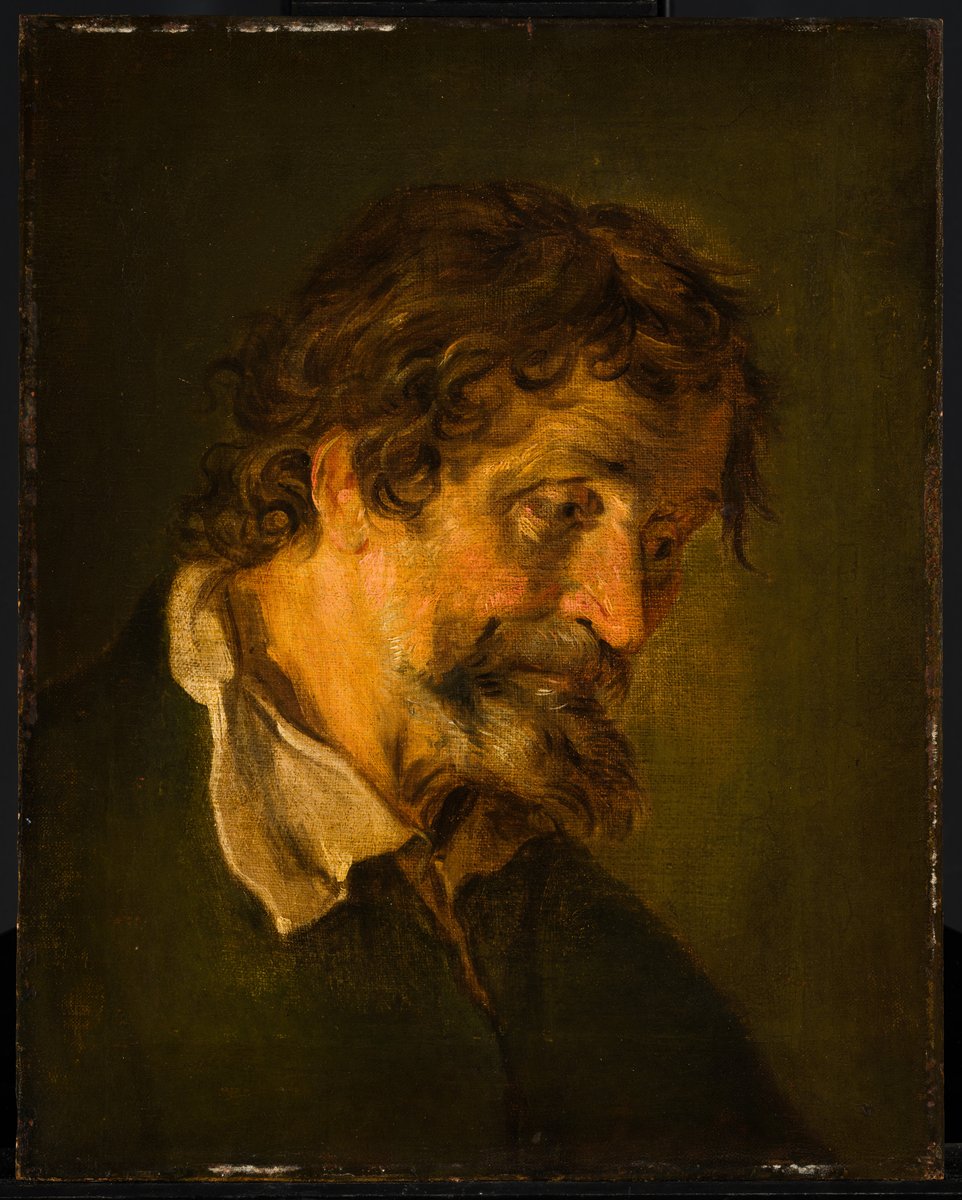
Fragment with a Male Head
Old Master Paintings
| Artist | |
|---|---|
| Culture | Italian |
| Date | ca. 1542 |
| Object type | painting |
| Medium, technique | oil on canvas |
| Dimensions | 156 × 212 cm |
| Inventory number | 111 |
| Collection | Old Master Paintings |
| On view | Museum of Fine Arts, First Floor, European Art 1250-1600, Gallery XXI |
According to the Gospel of Saint Luke, two of Christ’s disciples, while on their way to Emmaus, met the resurrected Christ and failed to recognize him. They sadly told him that Jesus’ grave had been found empty. With a measure of tension, liveliness, and poignancy unprecedented in Venetian painting, Tintoretto’s work illustrates the moment when the disciples first recognize their master. To quote from the Gospel account (Luke 24:30-31): “When he was at table with them, He [Jesus] took bread and blessed and brake and gave to them. And their eyes were opened and they recognized him; and he vanished out of their sight.” Faithful to the Scripture, Jesus, while blessing the bread, is no longer corporeally present: he dissolves into an apparition. The pilgrim sitting with his back to us gesticulates wildly as if wanting to seize the disappearing vision, while his companion, shown facing the viewer, is turning toward the bearded old man, spreading out his arms in awe of the miracle. The other figures – the innkeeper offering fish to Christ on a dish and the servant girl proffering wine to a youth – remain unaware of the miracle, as their gestures indicate; although they are present, it eludes them.
The basic composition still conforms to the High Renaissance norm: the scene takes place in an enclosed space parallel to the picture plane, defined by a checkered stone floor across the foreground. Christ’s place on the central axis is reiterated by the column over his head and the corner of the table. The two groups of three figures flanking Christ are regulated by the classical system of contrasting counterbalances. This compositional scheme, based on equal bilateral groupings is, however, shattered by the agitated movement of the figures to either side of Christ. The rough, broken brushstrokes, drawn with incredible vigor, emphasize the twisting postures of the disciples. Although the colors are typically Venetian, Tintoretto applies them to characterize figures that are Michelangelesque in energy and plasticity. Unlike Veronese, whose elegant style enthralls the viewer, Tintoretto utilized the theatrical nature of his compositions to command the viewer to witness the miraculous and supernatural.
The Budapest painting is generally assumed to predate the master’s earliest documented work, the Last Supper of 1547 in the Scuola di San Marcuola. Scholars suggest a date around 1542, making the picture one of the young Tintoretto’s most important early works.
Text: © Vilmos Tátrai
Pigler, Andor, Katalog der Galerie Alter Meister, 1-2. Museum der Bildenden Künste, Szépművészeti Múzeum, Budapest. 2, Akadémiai Kiadó, Budapest, 1967, p. 692.
Botticelli to Titian: Two Centuries of Italian Masterpieces, Szépművészeti Múzeum, Budapest, 2009, p. 356-357, no. 106.
Botticellitől Tizianóig: az itáliai festészet két évszázadának remekművei, Szépművészeti Múzeum, Budapest, 2009, p. 356-357, no. 106.
This record is subject to revision due to ongoing research.